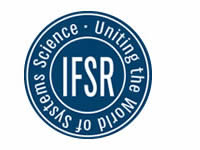IFSR Newsletter 1998 Vol 17 No. 2 June

Designing Integrated Community Service Systems, Ken Udas, Manfred Beneder, Mathew James, Irene Paritsis, Steven Stromp, Fuschl Conversation 1998, IFSR Newsletter 1998 Vol 17 No 2 June
Ken Udas (kenudas@acm.org), Manfred Beneder (mb@sea.uni-linz.ac.at), Mathew James (mjames@lincoln.ac.uk), Irene Paritsis (paritsis@ilios.med.uch.gr), Steven Stromp (steven.stromp@internet.sk)
The group approached the trigger question by first exploring related issues such as the
meanings and concepts of community, development, and design. A distinction between micro- and macro-community was developed that is consistent with the traditional notions of system, and supra-system. In addition, six characteristics of community were identified. These may be used in evaluating the nature of, need for and application of community development. These characteristics are:
- identity, of both individual community members and the community itself,
- stages in community evolution e.g., forming storming and norming,
- roles adopted by community members,
- a notion of geography, or “closeness”,
- support, of individuals by the group, commonality of experience, and
- exchange between the micro and macro community (ies).
Finally, the group also suggested a process for community development. For this, a set of
guiding, but not imposing, principles was developed. This iterative process comprises four stages,
- identification of stakeholders and definition of the macro-community,
- dialog between macro and micro communities,
- identification of development / development need,
- operationalize development.
To support this model for development al design, a model for the measurement of the maturity of the development process was constructed in order to ensure continuous quality improvement. This maturity model is applicable to any kind of development process as well as to any size of community.
